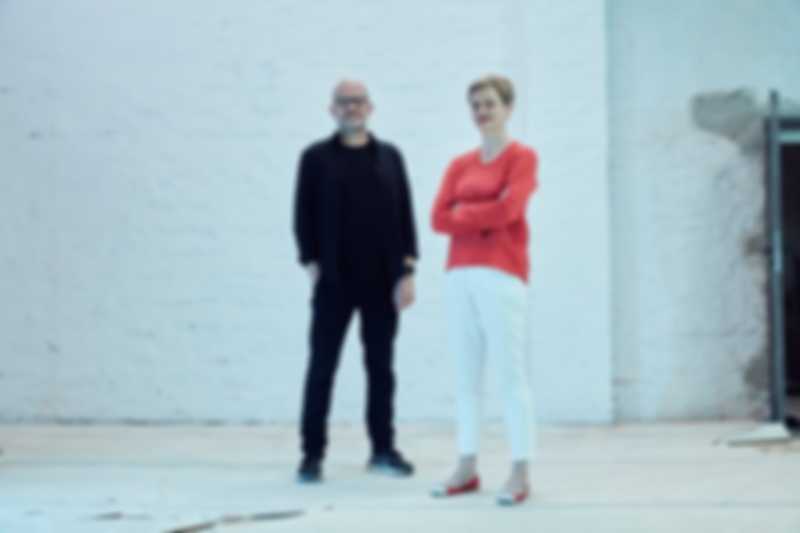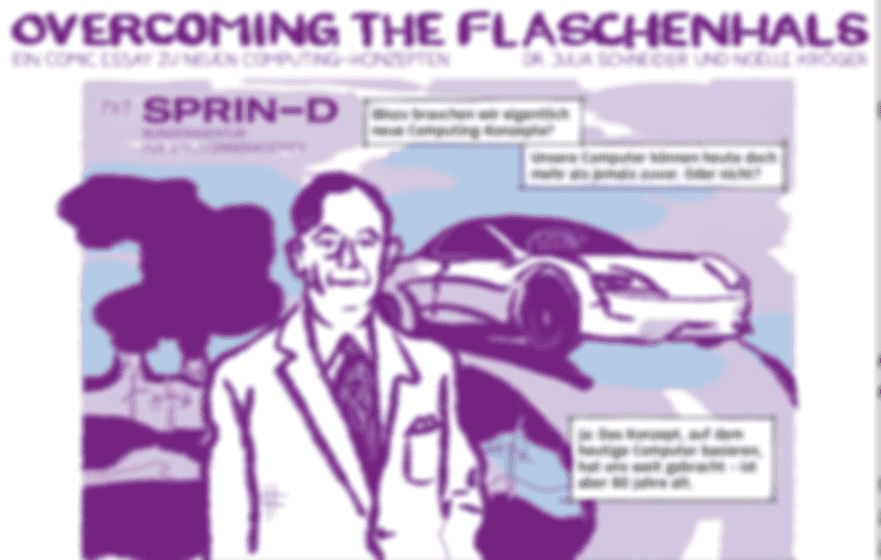No more innovation theater
Prof. Dr. Katharina Hölzle, Head of the Institute for Human Factors and Technology Management at the University of Stuttgart and of the Fraunhofer Institute for Industrial Engineering, looks at Germany as a center of innovation—and at SPRIND as a role model.
Germany is still the largest national economy in Europe and an international leader with respect to investment in research and development. The manufacturing industry and technological innovations are a central foundation of the international competitiveness of Germany and an important guarantor for socioeconomic prosperity. Here, the chemical and pharmaceutical industry play a vital role as well as the electrical engineering, mechanical engineering and automotive industry.
However, a decreasing participation in macroeconomic innovative achievement by small and medium companies in particular is to be seen. Initially a result of the effects of the COVID pandemic and currently due to macroeconomic uncertainty, the planned investment for new machines and systems—as well as for all types of innovative projects—has decreased significantly.
In addition, Germany’s position in terms of central key technologies has drastically declined in comparison to other countries, in particular with regard to key digital technologies like artificial intelligence, digital security technology and microelectronics. Not nearly enough is being done in Germany with respect to both research and utilization. According to Handelsblatt, Germany’s position as a start-up nation has slid from 41st to 43rd place (a five-percent drop) among the countries compared—that is, the percentage of working-age people who have founded a company within the past three and a half years. There are not many indications of innovation, and this is happening at a time when major challenges urgently need radical solutions. It is a major cause for concern.

Before I sketch out possible approaches, I would like to name five drivers of the current situation:
The LOW RATE OF DIGITIZATION, caused by a highly heterogeneous digital infrastructure and generally low adoption of digital tools and services.
A NON-INCLUSIVE INNOVATION SYSTEM: Large companies and only a few regions are drivers of innovation in Germany. The percentage of women among patent applicants and in the STEM fields is very low compared to other OECD countries. Low participation in innovation and little momentum among start-ups and young companies.
AN INCREASING SHORTAGE OF SKILLED PROFESSIONALS, which has strongly accelerated in recent years. Experts currently estimate 450,000 to 600,000 unfilled positions.
A LACK OF TRANSFER FROM RESEARCH TO APPLICATIONS, founding a new venture in particular. Despite very high investment in university and public research and development, Germany’s science-based and deep-tech start-up founding rate is much too low.
INCREASING FORMALIZATION AND BUREAUCRATIZATION. An ever-increasing percentage of (government) research and innovation spending is flowing into structures like management, administration and regulation, which are not directly related to innovation.
The German pursuit of perfection and standardization was an important ingredient on the path to becoming the world champion in innovation for many years. In many fields, German companies are world champions in terms of quality—the German path to gap dimension (Spaltmaß
) optimization, for example, is telling. These kinds of capabilities are primarily important for incremental innovation, though. In today’s world, this is not enough. Instead, we need radical innovation, and this plays by completely different rules. Radical innovation demands courage, the desire for risk, the possibility and acceptance of failure and freedom to try things out. It demands different skills, like entrepreneurial thinking and acting, collaboration and critical reflection.
It is no longer enough for companies and organizations to give themselves a coat of innovation paint
by founding an innovation lab here and an accelerator there or making a big announcement about cooperation with a start-up or scientific organization—something we call innovation theater. In most cases these initiatives have not lived up to the hope vested in them. The main reason for this is that change and innovation were not really wanted: they’re different, challenging, uncomfortable and therefore unwelcome. They mean that traditional structures, processes and ways of working have to be abolished or changed. Many people in management positions were not—and still are not—prepared to provide true freedom, take risks, eliminate existing structures and think in fundamentally new ways. This diagnosis applies not only to companies, but political, education and research organizations as well.
We must acknowledge that this innovation theater is not enough anymore. We must stop deceiving ourselves that everything is going very well, that a few small changes and adjustments here and there will be enough and that our past strengths will also be our future ones. Instead, we will have to say goodbye to what we have grown to love, we will have to do without, and we will have to adjust to something that has never existed before. This will not be easy, especially since we have lost our flexibility, resilience and courage and have stopped exploring new things. Our innovation muscle has become weak. We have to start building it back up again as quickly as possible. What we need now is a desire for the future, a desire for innovation and a desire for risk.
Over the past few years, SPRIND has shown us how this can work. We have seen how the establishment struggled with it and how strong the tendencies to persist were (and still are). SPRIND’s path, however, shows us that it is possible to question traditional ways of thinking AND to change them. SPRIND was never innovation theater. It was real from the very start. SPRIND’s path has not been straight, and this will not change in the future. It shows us that sometimes we have to go two steps back if we want to go one forward. You have to try things out before you can say what works and what does not. Structures and institutions can change, even if at first everyone (except for one lone dissenter) says they cannot. To me, SPRIND represents a role model, provocation, and real change.
From innovation research, we know that radical innovation happens when nothing else works. Innovation boosts come in times of crisis. Is there one true path to get there? No, not at all. Regardless of the path taken, the important thing is a culture which is innovation-friendly and ready for change. This requires all stakeholders from science, business, society, and policy. If all of them are taken on board and allowed to help shape the future, I am optimistic that we, as a society, as a country, will be able to jointly build on the potentials of this country, to shape the path of innovation together, to tackle the major challenges that await us with innovative approaches, and to shape a shared future worth living in. Thanks to SPRIND, we have a role model for this.
Guest article from TAT-SACHEN 2021|22.



